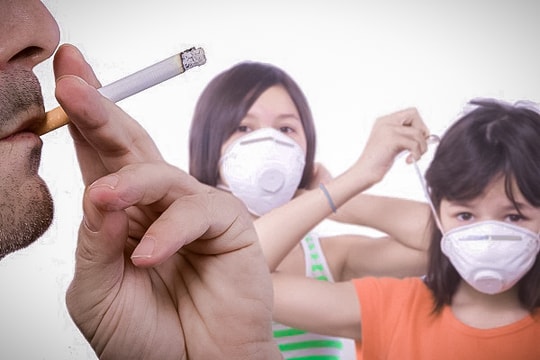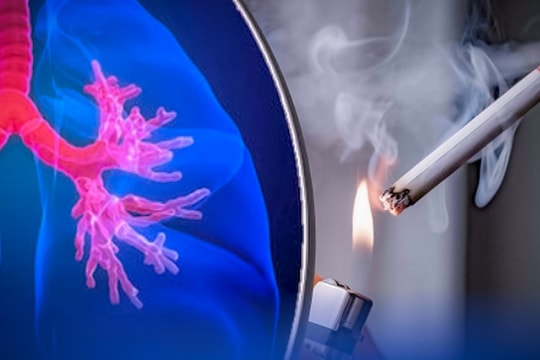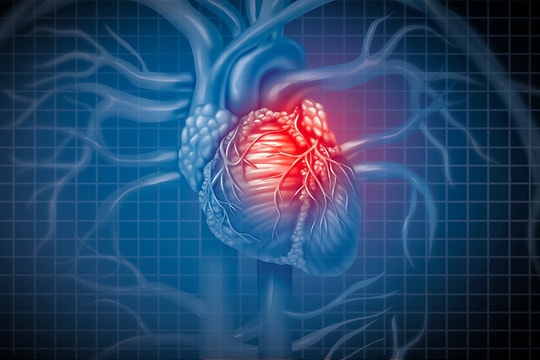Every puff of cigarette smoke – a wound on a child's lungs
Children under 1 year of age who are children of smokers are twice as likely to develop bronchitis or pneumonia as children of nonsmokers.
Children who live with smokers are exposed to or inhale secondhand smoke. Secondhand smoke comes from two sources: passive smoke and thirdhand smoke. Secondhand smoke is the smoke exhaled by the smoker. Thirdhand smoke comes from the burning end of a cigarette and makes up the majority of the smoke in a given environment.
.jpg)
Secondhand smoke is 2-3 times more toxic than cigarette smoke because it does not go through the filter. A child who is in a room with several smokers for about 1 hour will absorb as many toxic chemicals as someone who smokes 10 cigarettes a day.
In general, children whose mothers smoke inhale more secondhand smoke than children whose fathers smoke because they typically spend more time with their mothers. Children who breastfeed from mothers who smoke are at greatest risk because chemicals from secondhand smoke are released into the breast milk. The effects are similar to those from secondhand smoke in the baby’s environment.
The harmful effects of tobacco on children's bodies
1. Respiratory related diseases:Children who inhale secondhand smoke are more likely to suffer from lung-related diseases. Some common symptoms include colds, flu, cough, phlegm, shortness of breath, pneumonia, etc. If they regularly live with cigarette smoke, children will suffer from asthma and some chronic respiratory diseases.
2. Cigarettes can cause sudden death:Nicotine in cigarette smoke can lead to respiratory symptoms leading to sudden death in children.
3. Harmful effects of tobacco on the nervous system:Children's brains are still in the process of development and completion, so if they inhale cigarette smoke, it will have a negative impact on the nervous system. It will negatively affect the development of reasoning skills, cognitive skills in children as well as cognitive function decline, memory loss, behavioral problems, and hyperactivity.
4. Incidence and severity of asthma:Children in households with smokers require more medical care and are twice as likely to have daily asthma attacks and are hospitalized more often for asthma than children in households with non-smoking parents.
5. Acute and chronic otitis media:Exposure to secondhand smoke also increases the risk of chronic otitis media and effusion. Otitis media causes deafness and places a heavy economic burden on families and children.
6. Cancer is one of the harmful effects of cigarette smoke:One of the most dangerous things about smoking is that it can cause cancer in children at a very young age. If exposed to cigarette smoke in the early years of life, children can get lymphoma, leukemia and brain cancer. When children grow up, they are very susceptible to lung cancer, breast cancer or other parts of the body.
.jpg)
7. Prone to colds:Frequent exposure to cigarette smoke will make children susceptible to colds every time the weather changes. Therefore, take good care of your children and do not let them be exposed to cigarette smoke.
8. Cough:Children who are exposed to cigarette smoke often have coughs. In more serious cases, the child may cough so much that blood may appear in the mucus when coughing.
9. Sore throat:Sore throat is one of the most common illnesses in children exposed to cigarette smoke. Children do not smoke, but the smoke you breathe in affects them. Secondhand smoke can cause infections in children's throats.
10. Bad breath:Children exposed to secondhand smoke are more likely to have bad breath from an early age. This can affect their communication as they grow older.
11. Hoarseness:Children will have hoarse voices if they are exposed to cigarette smoke. During puberty, the voice will develop and if the child is exposed to cigarette smoke before then, the child's voice will become hoarse. The harmful effects of cigarette smoke will make it difficult for the child to regain a normal voice after adulthood./.




-92d29ef9f76e6e127b44a03813ec94ba.jpg)


